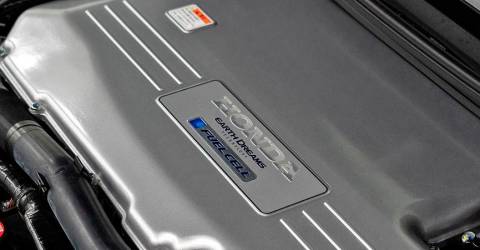WHILE many companies are now focussed on developing more battery electric vehicles (BEVs), a few are also looking further at other alternative fuels, particularly hydrogen. This gas is available in abundance and with technology from the space program, it has been possible to make a fuel cell whereby hydrogen’s chemical energy is converted into electrical energy. This can then be used to power motors and the process generates only moisture.
Some companies have developed fuel cell electric vehicles (FCEVs) to a stage where they can be commercialised and are sold or leased to the public. Honda is one of those companies and in fact, the Japanese carmaker has over 20 years of experience in FCEVs. As far back as 2002, Honda had a running model called the FCX which was the FCEV to be certified by two US agencies – the Environmental Protection Agency and California Air Resources Board.
Though Honda did not produce large numbers of the FCX, it gained much useful real-world data (especially in different climatic conditions) for its ongoing R&D on such vehicles. This led to additional fuel-cell models like the FCX Clarity being developed which had improvements and advancements in many aspects.
There are still issues such as a refuelling network and cost which limit public acceptance of FCEVs but Honda is still pushing ahead and has announced that it will produce an all-new hydrogen FCEV which will be launched in 2024.
The FCEV, which will be based on the new CR-V recently launched in America, will be North America’s first production vehicle to combine a plug-in feature with FCEV technology in one model. This will enable the driver to charge the onboard battery pack for zero emissions electric around town with the flexibility of fast hydrogen refuelling for longer trips (assuming that the refuelling network grows). FCEVs can refuel in minutes, providing a familiar level of travel convenience for drivers accustomed to conventional automobiles.
The new FCEV will be built at Honda’s Performance Manufacturing Centre (PMC) in the USA. Ts is facility, which began operations in 2016, was conceived as a small volume, specialty manufacturing facility. It is focused on craftsmanship and hand-assembled vehicles such as the NSX supercar, multiple Acura PMC Edition vehicles (including TLX, RDX and MDX) along with Honda Performance Development racing cars.
This makes the PMC uniquely suited to production of FCEVs which require special assembly procedures. This approach is similar to the broad role that the Tochigi plant in Japan played in manufacturing both the original NSX (from 1989) and, later, the FCX Clarity FCEV in 2008.
Honda has long believed that FCEVs powered by hydrogen created through renewable sources will be a key part of a sustainable transportation future as they release no CO2 emissions at all; water and heat are the only by-products of electricity generation.
This new zero-emissions vehicle will contribute to Honda’s previously announced goal to make BEVs and FCEVs represent 100% of its global auto sales by 2040. “Honda established our goal to realize carbon neutrality by 2050 and the complete electrification of our vehicle line-up by 2040 is critical to achieving it,” said Gary Robinson, Vice-President of Auto Planning & Strategy for American Honda Motor Co., Inc.
